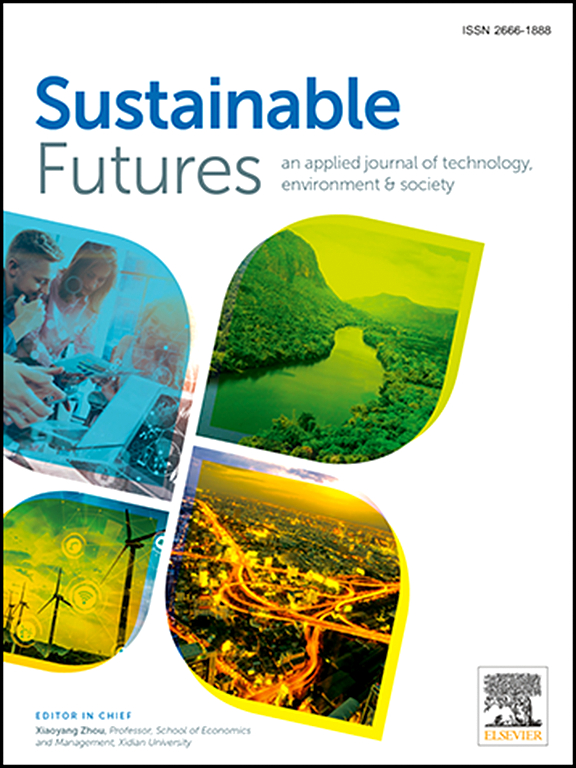The role of debt burden, green financing, and energy efficiency in reducing carbon footprints in MINT & BRICS economies: New evidence from panel QARDL method
IF 3.3
2区 社会学
Q2 ENVIRONMENTAL SCIENCES
引用次数: 0
Abstract
The study examines the impact of debt burden, green financing, energy efficiency, and electrification on environmental sustainability in MINT and BRICS countries from 1990 to 2022. Using the Panel Quantile Autoregressive Distributed Lag (QARDL) model estimator, the analysis also includes robustness checks without control variables. The findings reveal that green financing, FDI, and energy efficiency reduce the carbon footprint, whereas debt burden, electrification, and GDP growth increase it in the short run, particularly in low- to mid-quantiles. Notably, the effect of debt burden is positive in the short run but becomes negative in the long run. The interaction terms highlight that the combined effects of energy efficiency and debt burden amplify the carbon footprint, while the interaction of green financing and electrification with debt suggests a cleaner energy transition when resources are efficiently allocated. These findings imply that green financing can effectively reduce the carbon footprint in MINT and BRICS nations, especially in the presence of economic growth and consistent FDI inflows. However, without economic growth and FDI, the debt burden in the MINT and BRICS economies tends to worsen the carbon footprint. The study recommends increasing green financing in renewable energy projects, energy-efficient appliances, sustainable transportation, green bonds, and climate change mitigation initiatives.
债务负担、绿色融资和能源效率在减少MINT和金砖国家经济体碳足迹中的作用:来自面板QARDL方法的新证据
该研究考察了1990年至2022年债务负担、绿色融资、能源效率和电气化对新兴市场国家和金砖国家环境可持续性的影响。使用面板分位数自回归分布滞后(QARDL)模型估计器,分析还包括无控制变量的鲁棒性检查。研究结果表明,绿色融资、外国直接投资和能源效率降低了碳足迹,而债务负担、电气化和GDP增长在短期内增加了碳足迹,特别是在中低分位数。值得注意的是,债务负担的影响在短期内是积极的,但从长期来看是消极的。相互作用条件强调,能源效率和债务负担的综合效应放大了碳足迹,而绿色融资和电气化与债务的相互作用表明,当资源得到有效分配时,能源转型将更加清洁。这些发现表明,绿色融资可以有效地减少MINT和金砖国家的碳足迹,特别是在经济增长和持续的外国直接投资流入的情况下。然而,如果没有经济增长和外国直接投资,MINT和金砖国家经济体的债务负担往往会加剧碳足迹。该研究建议在可再生能源项目、节能电器、可持续交通、绿色债券和减缓气候变化举措方面增加绿色融资。
本文章由计算机程序翻译,如有差异,请以英文原文为准。
求助全文
约1分钟内获得全文
求助全文
来源期刊

Sustainable Futures
Social Sciences-Sociology and Political Science
CiteScore
9.30
自引率
1.80%
发文量
34
审稿时长
71 days
期刊介绍:
Sustainable Futures: is a journal focused on the intersection of sustainability, environment and technology from various disciplines in social sciences, and their larger implications for corporation, government, education institutions, regions and society both at present and in the future. It provides an advanced platform for studies related to sustainability and sustainable development in society, economics, environment, and culture. The scope of the journal is broad and encourages interdisciplinary research, as well as welcoming theoretical and practical research from all methodological approaches.
 求助内容:
求助内容: 应助结果提醒方式:
应助结果提醒方式:


